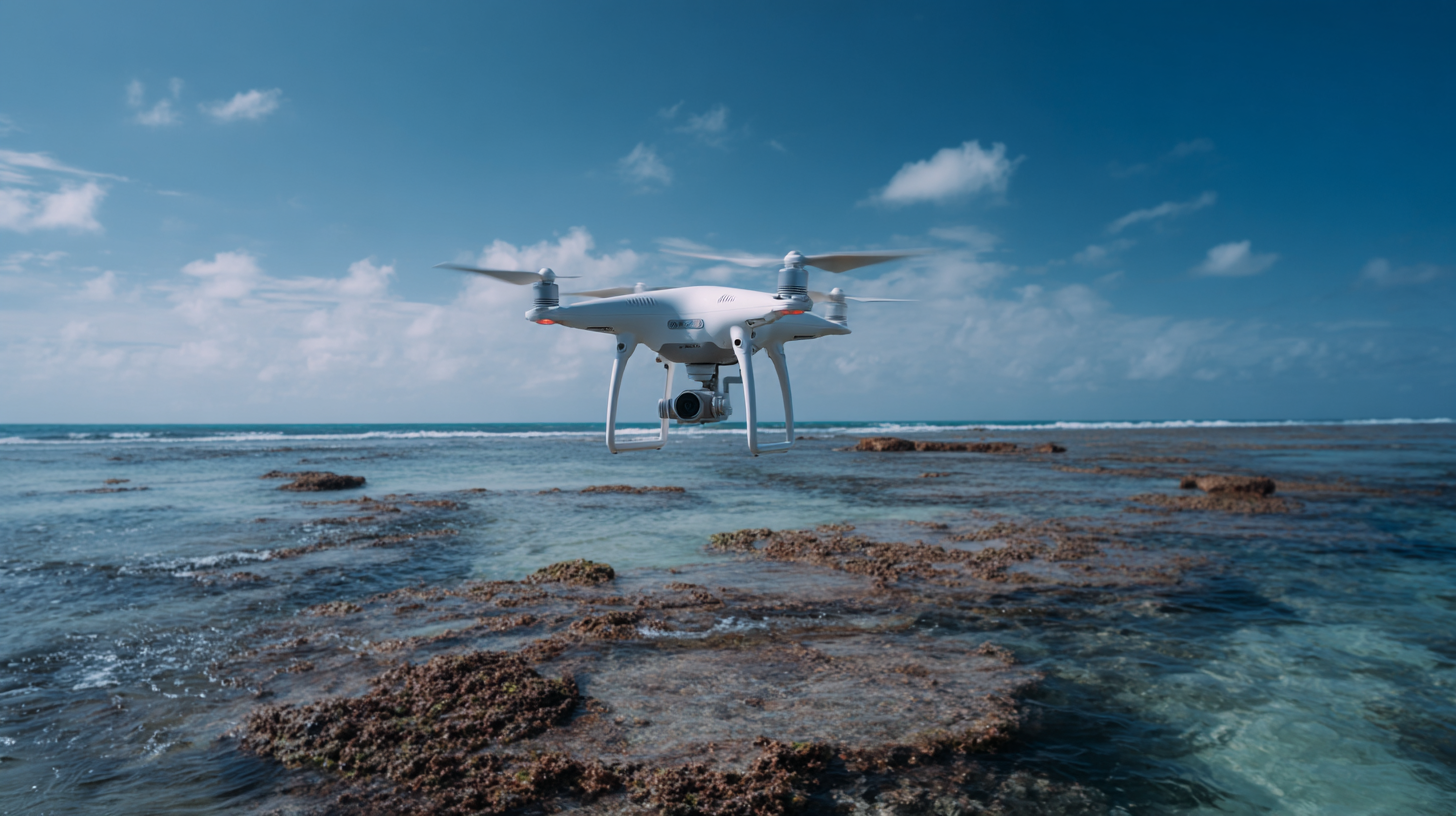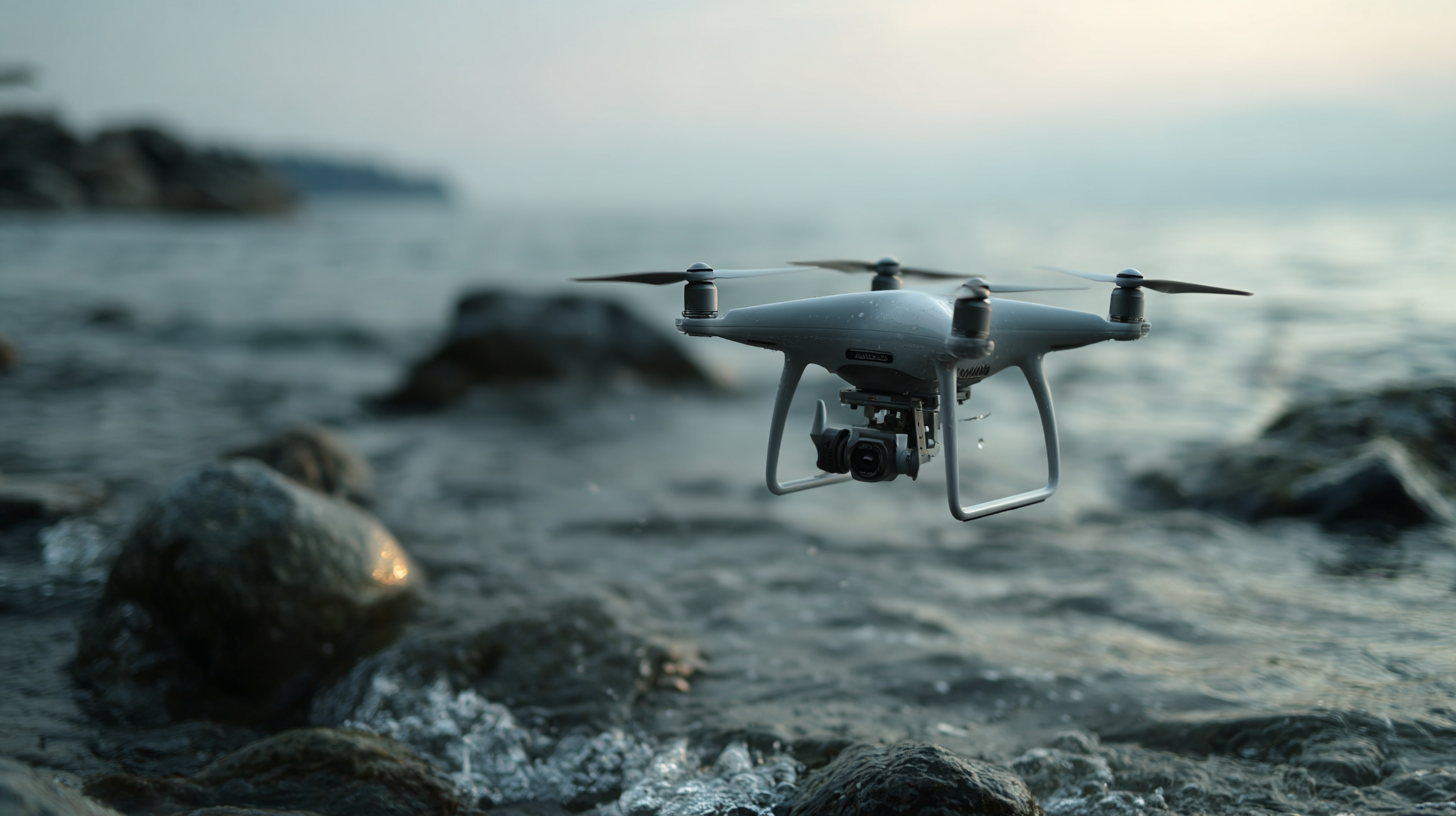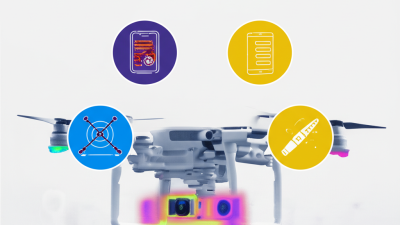Leave Your Message
In recent years, the emergence of waterproof drones has revolutionized the fields of aerial photography and marine conservation. These innovative devices, designed to withstand harsh aquatic environments, have not only expanded the capabilities of photographers and researchers but have also played a pivotal role in environmental monitoring. According to a report by Allied Market Research, the global drone market is projected to reach $43 billion by 2024, with a significant segment dedicated to waterproof drones, which are increasingly utilized for capturing detailed aerial imagery in marine ecosystems. The ability to capture stunning visuals and collect critical data without disturbing marine life is essential for conservation efforts. As the Environmental Protection Agency highlights, approximately 80% of marine pollution comes from land-based sources, making it crucial to monitor and protect these delicate ecosystems. Therefore, the rise of waterproof drones represents a significant advancement in our approach to both visual storytelling and ecological preservation.

The increasing demand for waterproof drones in aerial photography is driven by a variety of factors that highlight their unique capabilities and advantages. As photographers and filmmakers aim to capture breathtaking visuals from unique angles, the ability to operate in wet and unpredictable environments has become crucial. Waterproof drones allow for seamless shooting over oceans, lakes, and rivers, opening new creative avenues that were previously challenging or impossible to access. This functionality not only appeals to professional photographers and cinematographers but also to adventure enthusiasts and commercial entities seeking to document marine ecosystems.
Moreover, the rise of waterproof drones is also intertwined with the growing awareness of marine conservation. These drones facilitate environmental monitoring and wildlife photography without disturbing delicate habitats. By collecting aerial imagery of coastal and underwater ecosystems, researchers and conservationists are empowered to study and protect marine life more effectively. The ability to gather data from sources that are otherwise difficult to reach enhances our understanding of the impacts of climate change and human activity on marine environments. This convergence of technology and conservation underscores the role of waterproof drones as essential tools in both artistic expression and environmental stewardship.
The rise of waterproof drones is revolutionizing aerial photography, particularly in marine environments where traditional drones often fall short. Key features such as high IP ratings—indicating resistance to water and dust—enable these drones to operate effectively in harsh weather conditions and over aquatic locations. Innovations in materials, like corrosion-resistant coatings and lightweight carbon fiber structures, enhance durability while improving flight efficiency. According to a recent report by the Drone Industry Association, the global market for waterproof drones is projected to reach $4 billion by 2025, driven by increased demand from sectors like marine conservation and environmental monitoring.
To maximize the capabilities of waterproof drones in marine conservation, understanding advanced technologies is crucial. Features like live video streaming and high-resolution camera systems allow researchers to capture detailed imagery of marine life and habitats, providing data critical to conservation efforts. Additionally, integrating GPS and sophisticated sonar systems can improve navigational accuracy and enable comprehensive assessments of underwater ecosystems.
**Tips:** When using waterproof drones for aerial photography, ensure that you follow local regulations regarding drone operations over marine areas. Additionally, consider using drones equipped with thermal imaging for nocturnal marine surveillance, which can uncover hidden aspects of oceanic life otherwise missed during daylight. Regular maintenance, particularly with respect to waterproof seals and components, will extend the life of your drone in challenging maritime environments.
The market for waterproof drones has seen significant growth, particularly in the realm of marine environments, driven by advancements in technology and the increasing need for innovative solutions in aerial photography and marine conservation. According to a report by ResearchAndMarkets, the global drone market is projected to reach $42.8 billion by 2025, with waterproof drones taking a notable share due to their versatility in challenging marine settings. As aerial photography becomes more critical for monitoring marine ecosystems, the demand for these specialized drones is expected to soar.

Marine conservation organizations are leveraging waterproof drones to conduct aerial surveys, monitor wildlife, and assess the health of marine environments. A study from the Ocean Conservancy highlighted that using aerial imagery from drones increases the efficiency of data collection by up to 30%, enabling researchers to gain insights into habitat changes and species populations more rapidly. Additionally, the integration of sensors and imaging technologies is enhancing the capabilities of waterproof drones, with a forecasted CAGR of 15% over the next five years in this particular segment, underscoring the growing recognition of their role in marine research and conservation efforts.
Waterproof drones have emerged as invaluable tools in marine conservation, allowing researchers and conservationists to capture unprecedented aerial imagery of marine environments. One notable case study involves the use of waterproof drones in monitoring coral reef health. By flying over delicate reef ecosystems, conservation teams can document coral bleaching events and assess the effectiveness of restoration efforts without disturbing the sensitive habitats. The high-resolution imagery obtained helps scientists formulate better strategies for conservation and engage the public in marine protection initiatives.
Another impressive application is in the study of migratory marine species. In a remarkable project off the coast of Australia, waterproof drones equipped with thermal imaging have been utilized to track whale migrations. By obtaining real-time data on whale movements, researchers can better understand their behaviors and identify critical habitats that require protection. This innovative approach not only enhances data collection but also minimizes the ecological footprint compared to traditional research methods.
**Tips:** When considering the use of waterproof drones for conservation, ensure to choose models that are easy to operate in marine environments. Additionally, familiarize yourself with local regulations regarding drone usage to avoid any legal issues. Lastly, teamwork is essential; collaborating with marine biologists and conservation organizations can significantly amplify the impact of your aerial photography efforts.
The advent of waterproof drones has revolutionized aerial photography, particularly in the realm of marine conservation. These specialized drones are designed to operate in challenging environments, allowing researchers to capture high-resolution images and video footage of marine life without disturbing their natural habitats. This capability not only enhances the quality of data collected but also provides a safer method for monitoring ecosystems that are otherwise difficult to access.
Additionally, waterproof drones play a crucial role in data collection related to environmental changes and threats within marine environments. They enable scientists to assess coral reef health, track migratory patterns of marine species, and monitor the impacts of human activity on vulnerable habitats. The real-time data gathered by these drones can inform conservation strategies, guiding policymakers and environmental organizations in their efforts to protect marine biodiversity. Ultimately, the integration of waterproof drones into marine conservation efforts allows for a more informed approach to environmental stewardship and the long-term preservation of ocean ecosystems.







